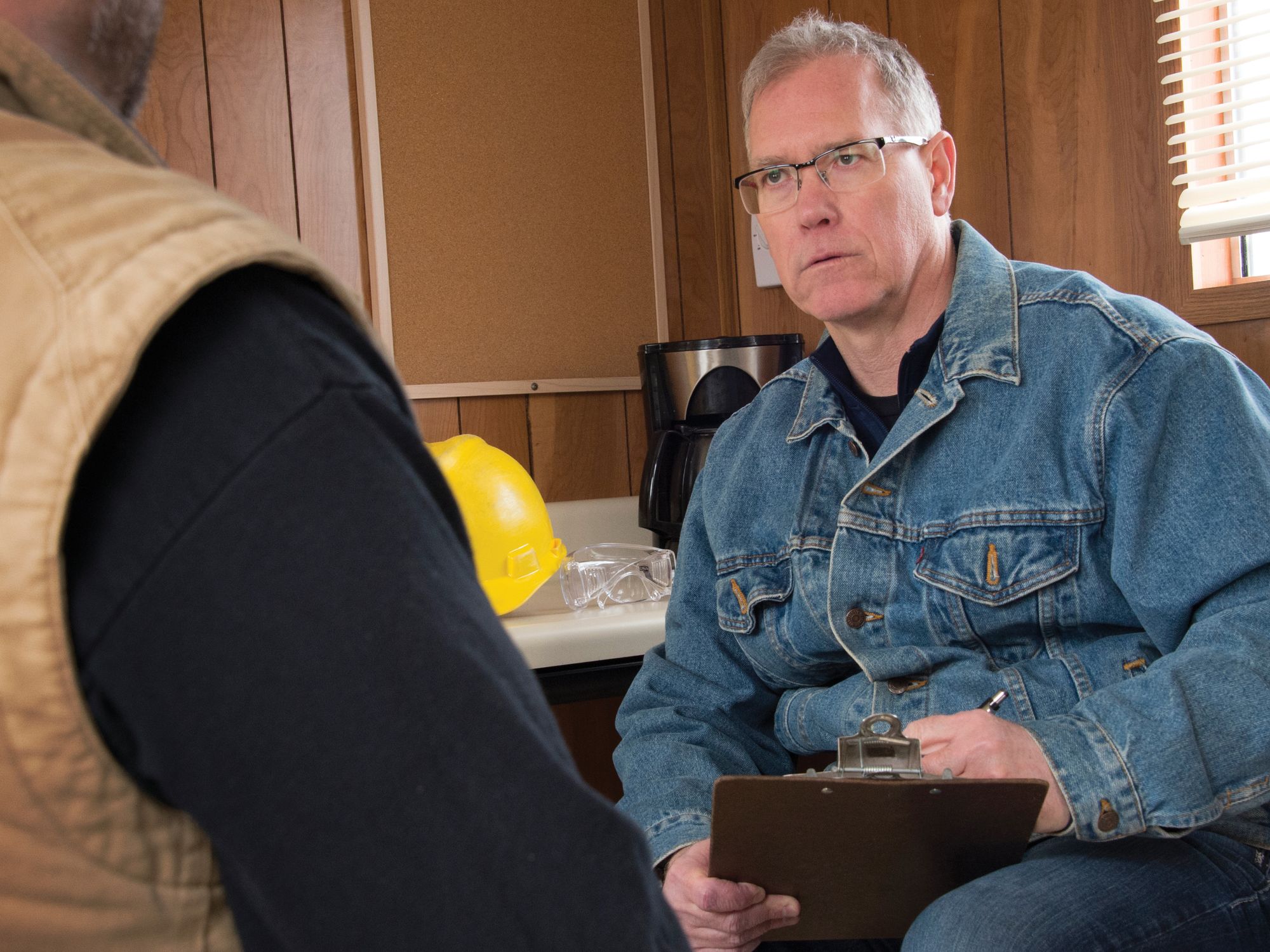InstituteAccident Investigation Preparation and ResponseAccident Investigation - OSHAAccident Investigation - OSHASafety & HealthGeneral Industry SafetyUSAEnglishAnalysisFocus AreaIn Depth (Level 3)
Conducting interviews
['Accident Investigation - OSHA']

- Consistency in conducting interviews and keeping records can assist with ongoing analysis of incident types and trends.
- To conduct a successful incident interview, develop effective interviewing techniques.
Conducting a detailed interview is probably not necessary for every incident. However, a consistent approach will enhance any ongoing analysis of incident types and trends.
When interviewing the victim(s) and observers, the goal is to get the facts, not to assign blame or point out how expensive or damaging the situation may be.
To conduct productive interviews, consider the following points:
- Conduct interviews as soon as possible after the incident, ideally at the incident scene. By interviewing as soon as possible, the employees’ recall will be sharper. Not only is the incident more vivid in their minds, but there is less chance for family or friends to influence the way the mishap is reported.
- Verify the employee’s physical and mental condition, especially if interviewing at the incident scene.
- Express concern for the employee’s well-being. Doing so helps to avoid defensiveness.
- Most companies rely on one person to conduct initial interviews. However, knowledge of a given employee and that employee’s personality could motivate a desire to have a second person present for some people who may get aggressive.
Before conducting an interview, an interviewer should verify compliance with all company policies and/or union contracts. Also, privacy is essential when interviewing. Conduct interviews in a nearby office or vehicle.
List of interviewing do’s
Successful interviewers stress these techniques:
- Conduct the interview at the scene of the incident, if possible.
- Explain that only the facts are needed. Filter out any defensiveness, name calling, or blaming.
- Explain that the goal of the investigation is to prevent future incidents. That puts the interview on the level of learning experience instead of inquisition.
- When interviewing witnesses, remind the employee that the investigation is to determine causes to prevent future injuries.
- Ask open-ended questions. Questions that can be answered yes or no are not open-ended, and the question should be rephrased. An example of a yes/no question would be: “Was the Number 5 press in good condition at the time of the incident?” An example of an open-ended question would be: “How would you describe the condition of the Number 5 press at the time of the incident?”
- Ask the employee to describe exactly what happened. Do not interrupt or ask for more details at this time.
- Repeat the employee’s version of the event back and allow any corrections or additions.
- After the employee has given a description of the event, ask appropriate questions that focus on causes. Avoid using words or body language that suggest fault or blame.
- When finished, remind the employee the investigation was to determine the cause and possible corrective action that can eliminate the cause(s) of the incident.
- End the interview on a positive note by thanking the person for helping with the interview process.
List of interviewing don’ts
When conducting the interview:
- Don’t make judgment calls about the incident and who may be responsible.
- Don’t respond in kind to an employee’s defensiveness, finger pointing, or emotional outbursts.
- Don’t pressure the person being interviewed.
- Don’t use a tone of voice that is demanding, sarcastic, or accusatory.
- Don’t interrupt the person being interviewed.
- Don’t ask why or opinion questions such as, “Why do you think that?”
